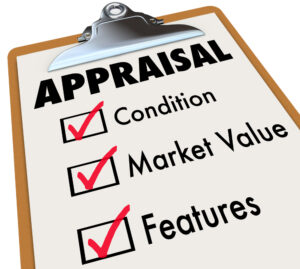A Primer on Valuing a Condemnation Case: The Sales Comparison Approach
 In the typical condemnation case (if there even is such a thing as a “typical” case), the “fair market value” of the property taken, plus any damages to any remaining property is the measure of the award of just compensation. The appraisal profession employs the term “market value” defined as:
In the typical condemnation case (if there even is such a thing as a “typical” case), the “fair market value” of the property taken, plus any damages to any remaining property is the measure of the award of just compensation. The appraisal profession employs the term “market value” defined as:
The most probable price, as of a specified date, in cash, or in terms equivalent to cash, or in other precisely revealed terms, for which the specified property rights should sell after reasonable exposure in a competitive market under all conditions requisite to a fair sale, with the buyer and seller each acting prudently, knowledgeably, and for self-interest, and assuming that neither is under undue duress. [Appraisal Institute, The Appraisal of Real Estate (15th Ed. 2020).]
Virtually every condemnation valuation will involve expert value opinion. Competing real estate appraisals performed by professional real estate appraisers are at the heart of the condemnation case. The appraiser must assure, in tandem with counsel, that all legally compensable items for which the owner is entitled to compensation have been considered by the appraiser and that legally non-compensable items have been excluded.
In determining “just compensation” for the property taken, appraisers must determine a property’s “highest and best use,” which may differ from the property’s actual use on the date of taking. “Highest and best use” is defined by the appraisal profession as: “The reasonably probable use of property that results in the highest value.” Appraisal Institute, The Appraisal of Real Estate (15th Ed. 2020).
For the purposes of this blog post, we want to focus the reader’s attraction on the “Market or Sales Comparison Approach,” which is the most prevalent out of the three main valuation approaches in a condemnation case (the remaining two valuation approaches, the Cost Approach and the Income Approach, will be saved for a future blog post). The Sales Comparison Approach is defined as:
The process of deriving a value indication by comparing sales of similar properties to the property being appraised, identifying appropriate units of comparison, and making adjustments to the sales prices (or unit prices, as appropriate) of the comparables based on relevant, market derived elements of comparison. The sales comparison approach may be used to value improved properties, vacant land, or land being considered as though vacant when an adequate supply of comparable sales is available. Appraisal Institute, The Dictionary of Real Estate Appraisal (7th Ed. 2020).
The Sales Comparison Approach to value is generally considered the most reliable of the three recognized approaches. State v. Vacation Land, Inc., 92 N.J. Super. 471, (App. Div. 1966). Obviously, a sales comparison analysis is only as good as the sales the appraiser uses to arrive at a value. The principal criterion for comparability is that the sales should share as many relevant characteristics as possible with the property under appraisal. Appraisers must fully understand the concept of comparability and should avoid comparing properties with different highest and best uses. Appraisal Institute, The Appraisal of Real Estate (15th Ed. 2020), pg. 108. Moreover, like units must be compared, so in many cases the sale price should be stated in terms of appropriate units of comparison. The units of comparison selected depend primarily on the nature of the property. Id. at 359. Lastly, while an appraiser is permitted to make adjustments to selected sales, adjustments to sales of such a large magnitude “suggest a lack” of their comparability to the subject property being appraised. 125 Monitor Street, LLC, v. Jersey City, 21 N.J. Tax 232, 243 (Tax Ct. 2004), aff’d 23 N.J. Tax 9 (App. Div. 2005). To that end, it is well settled that the admissibility of comparable sales is largely discretionary with the trial court. See In re Port of N.Y. Auth., 28 N.J. Super. 575, 580-581 (App. Div. 1953) (“It is conceivable that some sales, although of similar properties in the same neighborhood as that of the requisitioned property, do not exhibit a monetary consideration or purchase or exchange price evidential of fair market value. Notable examples are forced sales, intercorporate sales, family sales, and combination sales including both real and personal property for a single price. Again, in such instances the trial judge must exercise his sound discretion in the light of all the circumstances and conditions surrounding the particular transactions…”).
Stay tuned for future blog posts about the Cost Approach and the Income Approach…
For over 55 years, McKirdy, Riskin, Olson & DellaPelle, P.C. has concentrated its practice in this special area of the law and has earned a reputation for persistently defending its clients’ property rights. Our firm has successfully handled a broad range of eminent domain cases involving almost every type of property, including commercial buildings, industrial properties, development land, single and multi-family residential properties, hotels/casinos, oil/ gas pipelines, water rights and beachfront property, airports, farmland, and many more. If you are confronted with the threat of eminent domain, please feel free to contact us for a free consultation.







